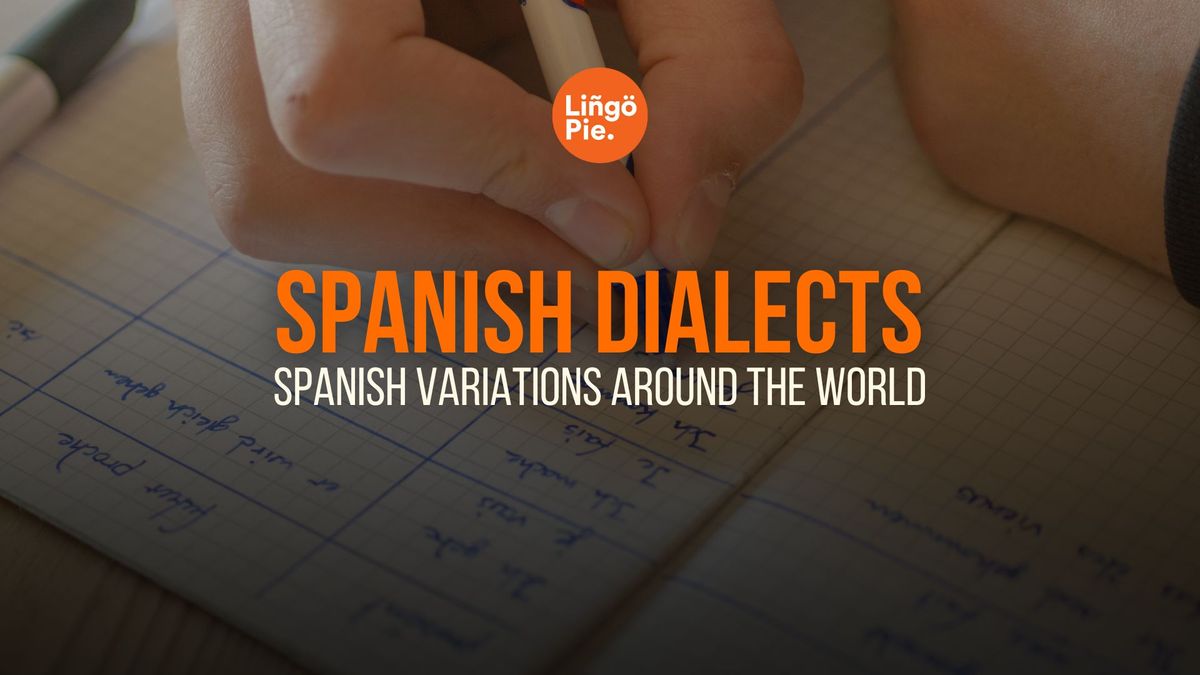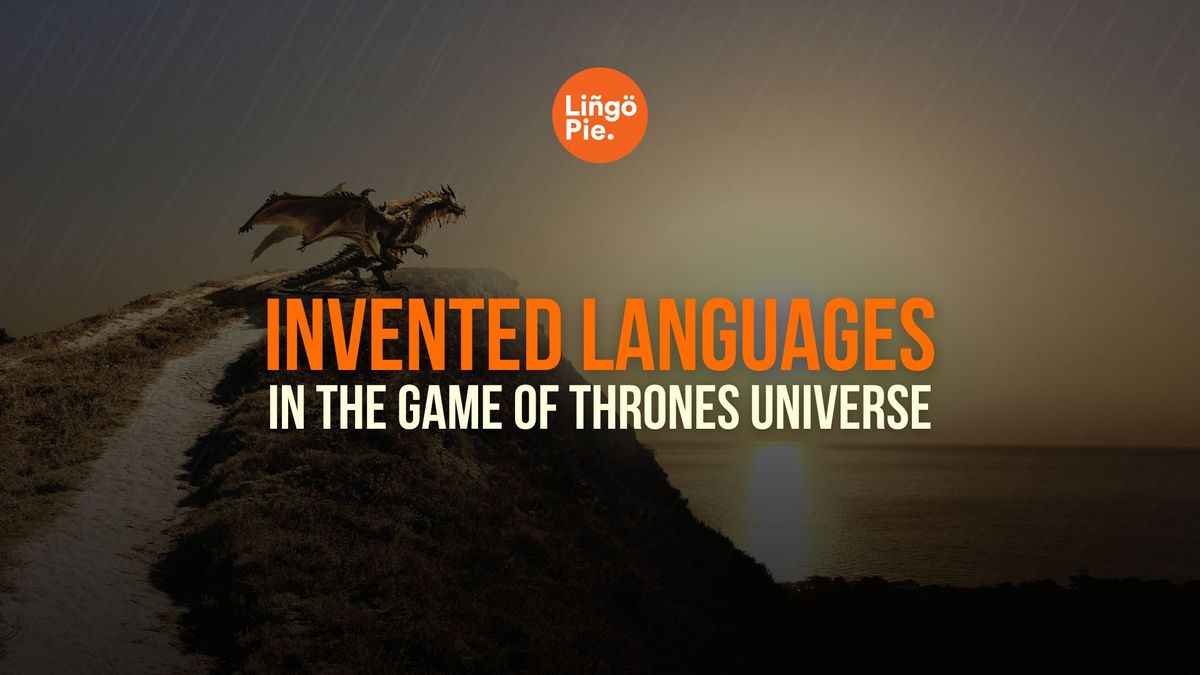If you’re learning Spanish or are thinking of taking it up as a second language, you may be wondering what the various Spanish dialects are - and why on Earth there are so many of them?! But before we get into all that…

What Is A Dialect, Anyway?
A dialect is a regional variant of a language. So, a dialect will be recognizable as the main language but feature some distinctive elements, such as words or phrases only found in a certain locality.
Some dialects will be very similar to the main language, while others will have lots of distinctive traits. Sometimes it can be hard for linguists to determine where a dialect ends and a new language begins.
And now that that’s out of the way…
What Are the Spanish Dialects In Spain?
How many Spanish dialects are there? While Spanish is the official language of the nation, the country boasts a variety of dialects and regional languages that reflect its complex historical and cultural landscape.
- Castilian - on the Iberian peninsula, this is the main Spanish dialect you’ll hear spoken. One of the main differences you’ll hear, as compared to Latin American Spanish, is that a ‘th’ sound tends to replace a ‘z’ or soft ‘c’ sound.
- Andalusian - spoken mainly in southern Spain, the Andalusian dialect; one of its defining characteristics is the frequent dropping of the ‘s’ from the end of words, of the ‘d’ sound in general.
- Murcian - although becoming more rare, where it is found is in the southern part of Spain; Murcian is similar to the Andalusian dialect.
- Llanito - this unusual-sounding dialect is spoken in Gibraltar - the British connections to this island are the reason for its fusion of Andalusian and UK English! The dialect also features plenty of words and phrases from Genoa, Malta, Portugal, and several other Mediterranean languages.
- Catalan - this isn’t actually a Spanish dialect, although it is often thought of as one; it’s really one of the official languages of Spain and is spoken on the island of Andorra.
- Basque - like Catalan, Basque is actually one of Spain’s official languages, rather than a dialect in itself. It’s spoken by just 2% of the country’s population in Northern Spain.
Here’s a tabulated comparison to show the differences between the Spanish dialects and languages:
| Dialect/Language | Example Word/Phrase | Pronunciation/Translation | Key Characteristics |
|---|---|---|---|
| Castilian (Peninsular Spanish) | Zapato (shoe) | "tha-PAH-toh" | "Z" and soft "C" pronounced as "th" sound (like in "think"). |
| Cerveza (beer) | "ther-VEH-tha" | Same "th" sound for soft "C". | |
| Andalusian | Vas (you go) | "vah" | Often drops the "S" at the end of words. |
| Pescado (fish) | "peh-KAH-o" | "D" sound is often softened or dropped. | |
| Murcian | Pescado (fish) | "peh-KAH-o" | Similar to Andalusian; "D" sound dropped. |
| Joven (young) | "hó-ven" | Very soft "J" and silent "V". | |
| Llanito | How are you? | "¿Qué tal, mate?" | Mix of Spanish and British English. |
| Auto (car) | "Carro" / "Car" | Incorporates English words like "car". | |
| Catalan (Language) | Llibre (book) | "LYEE-bruh" | Different vocabulary and pronunciation from Spanish. |
| Bon dia (Good morning) | "bon DEE-uh" | Distinct greetings, e.g., "Bon dia" vs. Spanish "Buenos días". | |
| Basque (Language) | Etxea (house) | "ETCH-eh-ah" | Completely different from Spanish, e.g., Etxea vs. Spanish Casa. |
| Kaixo (Hello) | "KAI-sho" | Unique greetings, e.g., "Kaixo" vs. Spanish "Hola". |

How About Latin American Dialects Of Spanish?
Of course, Spanish isn’t only spoken in Spain; it’s the main language of several Latin American countries in South America, too. Here are the main ones:
- Rioplatense - this dialect can be heard in parts of Argentina and Uruguay: its name derives from the Rio de la Plata river that runs through sections of these two countries. A key feature of the dialect is its incorporation of lots of words and phrases of French, German and English.
- Mexican - as well as being heard in Mexico, this dialect is also spoken in parts of the US and Canada. Spot it by its fusion of English and Spanish words.
- Caribbean - this is the exclusive dialect spoken in the Caribbean islands. Speakers frequently drop the final ‘s’ from words, and you’ll also hear many French, African, and English words incorporated. This dialect is spoken famously fast!
- Central American - a fusion of the Caribbean and Andalusian dialects, this can be heard in Costa Rica, Nicaragua, Guatemala, El Salvadore, Honduras, and parts of southwest Mexico.
- Paraguayan - one of the official languages of Paraguay is Guarani, and the influence of this can be clearly heard in the Paraguayan dialect.
- Ribereno - this dialect is spoken in the coastal regions of Peru.
- Equatorial - with a discernible African influence, the Equatorial dialect can be found in parts of the coast of Ecuador and Colombia.
- Amazonian - several sub-dialects fall under the Amazonian dialect umbrella; they’re spoken in the Amazon regions of Colombia, Peru, Bolivia, and Venezuela and very small regions of Brazil.
- Andean - spoken in The Andes region of South America, Andean slang is distinctive in how it clearly emphasizes the final letters of a word, and how it differentiates ‘j’ and ‘ll’ much more than most of the other Spanish dialects. It can be heard in the Andes region of Peru, Bolivia, Ecuador, Colombia, Argentina, and Chile.
- Chilean - this dialect has its own unique slang as well as distinct vocabulary, pronunciation, and grammar.
Here's a tabulated comparison of the different Spanish dialects mentioned:
| Dialect/Language | Example Word/Phrase | Pronunciation/Translation | Key Characteristics |
|---|---|---|---|
| Rioplatense | Tú (you, informal) | "Vos" | Use of vos instead of tú; incorporation of French, German, and English words. |
| Mexican | Camión (bus) | "ka-MEE-on" | Fusion of English and Spanish words; regional slang and Nahuatl influence. |
| Caribbean | Pescado (fish) | "peh-KAH-o" | Final "s" often dropped; fast-paced speech with African, French, and English influences. |
| Central American | Vosotros (you all, informal) | "Ustedes" | Fusion of Caribbean and Andalusian dialects; "vos" instead of "tú" in some areas. |
| Paraguayan | Che (I, me) | "Che" | Influence of Guarani language; unique vocabulary and pronunciation. |
| Ribereño | Mañana (tomorrow) | "ma-NYA-na" | Distinct coastal influence with Peruvian features. |
| Equatorial | Manteca (butter) | "man-TEH-ka" | African influence, particularly in pronunciation and rhythm. |
| Amazonian | Mujer (woman) | "mu-HER" | Varied sub-dialects; often spoken with a distinct regional intonation. |
| Andean | Llamar (to call) | "lya-MAR" | Emphasis on final letters; clear distinction between "j" and "ll". |
| Chilean | Cachai (Do you understand?) | "kah-CHAI" | Unique slang and vocabulary; distinct pronunciation and grammar. |
This table highlights the distinctive features, example words, and pronunciation characteristics for each of these Spanish dialects across Latin America.
What Are the Main Differences Between Spanish and the Mexican Dialects?
The Mexican dialect of Spanish has several distinctive traits that set it apart from standard Spanish. One of the most noticeable differences is the prevalence of English loanwords in Mexican Spanish, reflecting the geographical and cultural proximity to the United States.
However, the distinctions go beyond just vocabulary. Both variants have unique characteristics that make them distinct from each other. A prime example of this distinctiveness can be found in the Mexican slang expressions vs basic Spanish slang.
Pronunciation is also a major difference; in the Mexican dialect, the ‘ce’ and ‘z’ sounds of Spanish are usually pronounced as ‘s.’ In Spanish, the letter ‘b’ tends to be pronounced as a ‘v’ - in Mexico, however, the ‘b’ sound in words is clearly enunciated.
There are grammatical differences, too; for example, conjugations concerning ‘you’ vary in Spanish and its Mexican dialect cousin and the present perfect tense is employed differently in each.
Here's a tabulated comparison between Spanish (Spain) and Mexican dialects:
| Aspect | Spanish (Spain) | Mexican Dialect |
|---|---|---|
| Pronunciation | Seseo: "s," "z," "c" (before "e" or "i") pronounced as "th" sound (as in "think"). | Seseo: "s," "z," "c" (before "e" or "i") all pronounced as "s" sound. |
| Vosotros: Used for informal "you all." | Ustedes: Used for both formal and informal "you all." | |
| Intonation: Varied accents across regions. | Intonation: More neutral and slower. | |
| Vocabulary | Loanwords: Less indigenous influence. | Loanwords: Many indigenous words from Nahuatl (e.g., chocolate, aguacate). |
| Everyday Terms: Autobús (bus), móvil (mobile phone). | Everyday Terms: Camión (bus), celular (mobile phone). | |
| Regional Slang: Guay (cool). | Regional Slang: Chido (cool). | |
| Grammar | Tense Usage: Present perfect tense used for recent actions. | Tense Usage: Preterite tense preferred for recent actions. |
| Diminutives: Used, but less frequently. | Diminutives: Frequently used with -ito/-ita. | |
| Usage | Politeness: Formality varies, less frequent use of polite phrases. | Politeness: More frequent use of polite forms and phrases. |
| Spelling | Standardization: Generally follows the Real Academia Española. | Standardization: Follows the Real Academia Española, but some words differ in usage. |
Find out more about Mexico's history and how it came to speak Spanish.
What Latin American Dialect Should You Learn?
If you’ve decided to learn Spanish, then you may be wondering which Latin American dialect would be the most useful to pick up as part of your studies.
Well, that’s largely going to depend on your reason for learning a new language and your preferences.
If you’re planning on learning Spanish to boost your career opportunities, then Mexican Spanish may be a good option; this is widely spoken in the US and Canada, and so companies in these regions will likely find it a big plus point if you have this particular dialect on your resume.
In general, being bilingual in any language is a significant bonus for employers when selecting candidates for a role; it demonstrates the individual’s capacity for hard work, commitment, and cognitive capacity.
Alternatively, you may want to become proficient in Spanish and gain confidence in using a Latin American dialect because you want to travel to parts of the world where this dialect is spoken; in this case, choosing which to focus on will be easy.
You will probably find that, as you advance and become more fluent in Spanish, your ability to understand regional dialects will improve in tandem, and, in reality, you’ll naturally pick up various dialects as you go.
Especially if you have plenty of opportunities to immerse yourselves in the spoken Spanish word - more on how to do this below!
Why Are There So Many Spanish Dialects?
Well first, historically, Spain was divided into many different kingdoms, each of which would have had its own culture and traditions - each region would also have been affected by various invasions or incursions over the centuries, resulting in new tongues being introduced to the local language.
Further, kingdoms would have also sought to expand their own territories over time, and made attempts to bring neighboring regions into their borders.
Secondly, the Spanish spoken in the Latin American countries of South America would have been brought to these areas by Spanish explorers and conquistadors.
Over many years, the indigenous languages of these regions would have fused with ‘traditional’ Spanish to create brand new dialects - these dialects are still evolving and forming today.
What Is The Difference Between Accents And Dialects?
Good question. According to World Atlas, an accent is how a language is spoken, while a dialect is a different version of the language itself. Accents and dialects are both linked to region, however.
Let’s dig a bit deeper.
An accent, in the majority of cases, will be understood by anyone who speaks the language; a dialect, however, is a variation of the main language and can incorporate significant differences including new words or phrases. Some words, too, could actually have a varying definition, depending on the dialect being spoken.
When it comes to language learning, getting to grips with a different dialect can potentially be challenging, while becoming used to various regional accents tends to be comparatively easier - with practice, of course!
What Are The Benefits of Learning Spanish and the Different Spanish Dialects?
Learning Spanish can change your life in amazing ways. It's one of the most spoken languages in the world and is becoming more popular every day. Let's explore why learning Spanish and its dialects is so valuable.
In terms of business and career opportunities, Spanish is a great choice. In fact, many companies in Spain and South America are looking to work with businesses in the USA and Europe. If you speak Spanish, especially Latin American dialects, you'll have an edge in these markets.
You may also transition to other language-related roles like the following:
- Teaching: You could teach English in a Spanish-speaking country.
- Interpreting: Help people understand each other across languages.
- Translation: Convert written documents between Spanish and English.
But it’s not all about business: speaking the native tongue can enrich your travel experiences exponentially. You can:
- Find information about places to visit
- Ask for directions to great restaurants
- Book hotels and transportation without trouble
- Watch local TV shows and enjoy theater performances
Learning Spanish isn't just about work or travel. It's about people too! Speaking the language of a Spanish-speaking country enables you to fully appreciate the richness of Hispanic culture, and you’ll find the experiences that open up to you, as a result, will take you well beyond the well-trodden tourist trails.
When you speak Spanish, you can:
- Make new friends from different cultures
- Understand Spanish-speaking communities better
- Maybe even find love! (After all, Spanish is a romantic language)
And love is a universal language, but learning vocabulary for relationships certainly helps - so try watching these uplifting soap operas and learn Spanish.
What’s The Best Way To Learn Spanish?
Research has consistently shown that immersive learning techniques are the best - not to mention the most enjoyable - ways to learn a new language.
Immersive techniques involve surrounding yourself with as much of the language as you can daily. This could be by changing the settings on your phone to Spanish or flipping through a Spanish magazine or newspaper every day.
You could also try listening to music in Spanish or pairing up with another learner to have regular chats and email exchanges exclusively in the new language. You could join an online Spanish forum, specifically to polish up your Spanish conversational skills.
One of the most effective immersive learning techniques is to watch specially subtitled TV in the target language. This is a great way to pick up both Spanish and its dialects, and you’ll get to hear how the language is spoken in everyday, conversational settings.
Shows and films are also an entertaining way to discover some of the more colorful phrases, slang, and Spanish curse words!
Can I Really Learn A Language By Watching TV?
Watching subtitled TV is a great way to learn a new language - and stay motivated while doing so: you may have trouble tearing yourself away from your studies rather than getting started!
Don’t worry if, at first, you don’t understand everything - use the subtitles and replay a scene as many times as you need to if you wish.
Concentrate, at first, on getting a feel for the sound of the language: its tone, pronunciation, and rhythm. Over time you’ll find that you’ll understand more and more and, when you’re ready, you can either switch the subtitles from English to Spanish or turn them off entirely.
A great resource for visual learners is Lingopie, a streaming platform that offers TV shows and movies in 10 popular languages including Spanish! Lingopie also hosts some of your favorite Netflix shows, enhanced with the best Lingopie features such as interactive subtitles, instant translations, and custom flashcards for an immersive and enjoyable language learning experience.
You can simply click on any word or phrase in the subtitles to get an instant translation. This approach allows you to learn new vocabulary and understand complex phrases in context. Lingopie also includes features like flashcards and review games to reinforce what you've learned. From beginners to advanced learners, everyone can find content that aligns with their proficiency level and learning goals
But what are the best shows to help you pick up specific Spanish dialects? We round up the best of the bunch below:
Turismo Indígena en Chile
This is a great choice not only to help you pick up the Chilean dialect but also to learn more about the people and culture of this South American country.
Truco
Truco is a short Chilean film that offers another opportunity to practice listening to and understanding the Chilean Spanish dialect.
At just eleven minutes long, this is a perfect bite-size introduction to Chilean Spanish; the film focuses on an 80-year-old man who finds there's no money left on his pension pot, which results in him convincing his grandson to rob a bank.
Drama
Choose Drama if you’d like the opportunity to hear Catalan; there are a number of scenes in which the dialect is spoken.
Special Mexican Food Tour
This series is a great place to start picking up lots of Mexican dialect vocabulary; as the show travels around various parts of the country, there’s plenty of potential to hear a range of different regional accents, too. And it’s super entertaining, too!
This Special Mexican Food Tour is also on Lingopie!
Boca Norte
A popular TV series set in Barcelona, Boca Norte is a great binge watch that’ll also help you pick up some of the Catalan dialects along the way. The show follows a teenager who moves to a small community and meets some very interesting characters as a result.
La Ronco de Oro
Translated as ‘The Voice of Freedom,’ this Colombian telenovela tells the true story of Helenita Vargas, whose passion for singing helped her overcome her experiences at the hands of a deeply sexist society in the 1950s. The show is a great watch, and an opportunity to hear lots of local Colombian dialects, too.

How To Get Started Learning Spanish
If you’re ready to begin learning Spanish, want to polish up your skills on focus on one of the regional dialects, and if the immersive learning method sounds appealing, then head on over to the Lingopie language learning platform, where you’ll find all of the shows we’ve listed above along with an ever-expanding library of new titles.
There are a plethora of genres and styles, so finding films and boxsets to suit your taste is an easy - and enjoyable - task.
When you’re learning Spanish with Lingopie, as well as the tv shows and movies themselves, you’ll also get access to a range of interactive tools to help you develop your skills. Programs are available that are suitable for total beginners as well as for those who have advanced language skills.
So, simply grab some snacks, hit the sofa, and choose your first watch to begin your language learning journey, whether that’s with a fantastic Spanish binge-worthy boxset or a must-watch movie!







![Why Memorizing Spanish Words Won’t Make You Fluent [Tips]](/blog/content/images/size/w300/2025/06/how-to-practice-spanish-vocabulary.jpg)
![14 Spanish Filler Words To Sound Like A Native [Guide]](/blog/content/images/size/w300/2025/06/Spanish-Filler-Words.jpg)
